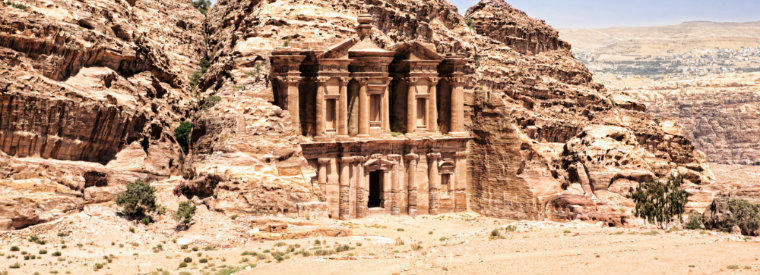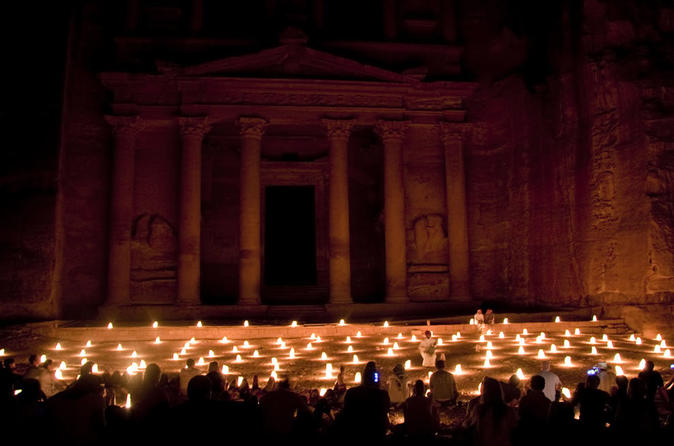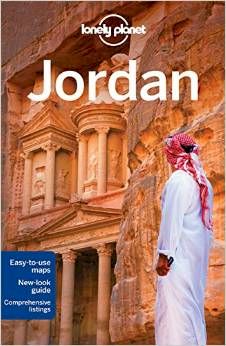« HOME • JORDAN • Discover Jordan • Petra
Discover Magical Petra
Petra, originally known to the Nabataeans as Raqmu, is a historical and archaeological city in southern Jordan. The city is famous for its rock-cut architecture and water conduit system. Another name for Petra is the Rose City due to the color of the stone out of which it is carved.
A | B | C | D | E | F | G | H | I | J | K | L | M | N | O | P | Q | R | S | T | U | V | W | X | Y | Z
» Byzantine Church (Petra Church)
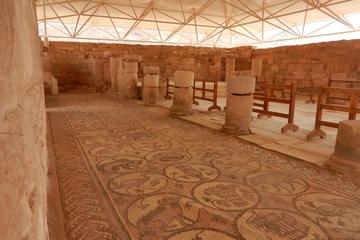
In 1990 American archeologist Kenneth W. Russell discovered the ruins of a Byzantine-era church. Two years later excavation began on the site of what is today simply called Byzantine Church or Petra Church. Originally constructed by the Nabataeans in the middle of the fifth century AD, the church as expanded and remodeled by the Byzantines in the early sixth century. Today, the awning-covered ruins are most famous for the 750 square feet (70 square meters) of well-preserved mosaics found within …
» Little Petra (Siq al-Barid)

Little Petra (Siq al-Barid) was a northern satellite of the main city, and it resembles Petra proper in enough ways to earn its nickname. Like at Petra, visitors approach Siq al-Barid through a canyon-like passage similar to the Siq at Petra. Unlike Petra, many of the structures carved into the cliff walls served as houses, as well as temples and communal gathering areas. Archeologists believe Siq al-Barid (Cold Canyon in English) once served as a trading post and agricultural hub where camel caravans could resupply on the way to and from Petra …
» Monastery (Al-Deir)
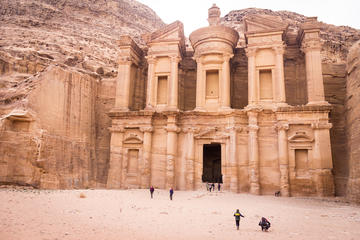
Tucked in the hills of Petra, the Monastery (Al-Deir) is only matched in magnificence by the Treasury. Built during the first century, the structure carved into the mountain was not a monastery at all, but rather served as either a tomb or a temple for members of the cult of Obodas. While less ornate than the Treasury, the Monastery is significantly larger, measuring 148 feet high and 165 feet across. An uphill but relatively easy trail leads from the Nabataean Museum to the Monastery, ascending a set of some 800 ancient rock-cut steps along the way …
» Petra

Petra: highlight not just of Jordan but of the entire Middle East; sublime and mysterious city; incomparable jewel of ancient architecture. Petra was once an important stop on a Roman trading route, but was only assimilated into the empire in 106 AD. Until then it had been a stronghold of the Nabataen Arab kingdom, whose knowledge of Greek architectural styles is reflected in their astonishing cliff-bound monuments. Today Petra is a UNESCO- World Heritage site. Approaching through the long, narrow chasm, or Siq, you come face to face with the graceful columns of the magnificent Treasury …
» Roman Theater (Nabataean Theater)
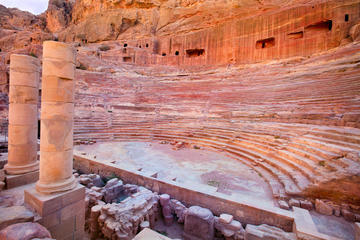
Contrary to its name, the Roman Theater (Nabataean Theater) was built by the Nabataeans years before the Romans entered Petra. The 2,000-year-old theater was carved into the rock, destroying pre-existing caves and tombs along the way. When the Romans annexed Petra in 106 AD, they expanded the Hellenistic amphitheater to accommodate some 8,500 people, slicing through even more tombs to make room for seats. While the theater was damaged by an earthquake in 363 AD …
» Royal Tombs
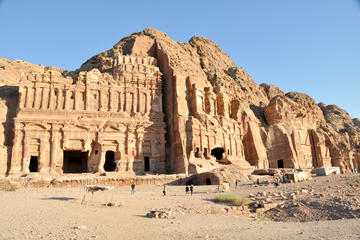
Downhill from the Theatre the west-facing cliffs of Jebel al-Madhbah house a collection of impressive tombs - among the most impressive burial places in Petra - known collectively as the Royal Tombs. The Urn Tomb, the largest of the collection, gets its name from the large urn perched atop its pediment. Carved from the rock in AD 70, this tomb was later used as a church by Byzantine Christians in the fifth century. The Silk Tomb, located next to the Urn Tomb, is easy to pick out from the others from the naturally colored striations that flow across its facade …
» Siq

As visitors walk through the narrow fissure known as the Siq, a sense of mystery and anticipation builds. This canyon-like corridor, partly natural and partly sculpted by the Nabataeans, serves as the main entrance to the ancient city of Petra, and the 3/4-mile (1.2-kilometer) path ranks among the most memorable elements of any visit. While it resembles a canyon, the Siq was actually formed when tectonic forces split the mountain in two. It begins at a dam built in 1963 atop a Nabataean dam from the first century …
» The Treasury (Al Khazneh)
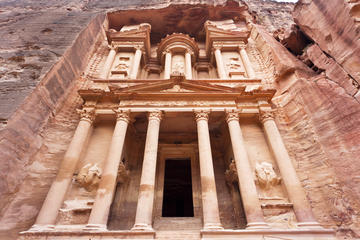
Thought to have been built sometime in the first century B.C., the Treasury is one of Jordan's most intricate temples (or perhaps tombs; no one knows which one it is for sure), with a design influenced by Greek architecture. At the entrance, visitors are greeted by statues of Castor and Pollux, Zeus' mythological twins, who are believed to have spent half of their time in heaven and the other half in the underworld. Glance up and you'll spy two enormous eagles symbolizing Dushara, a deity linked to Zeus and worshipped by the Nabateans …
« HOME • JORDAN • Discover Jordan • Petra


